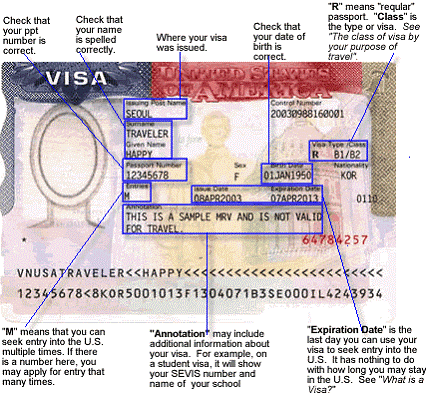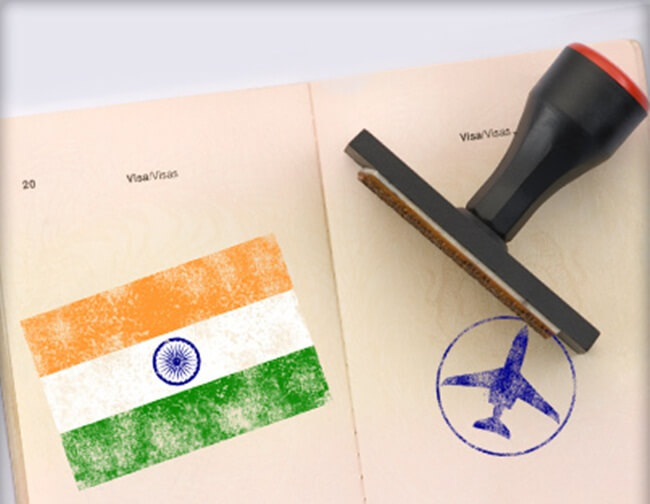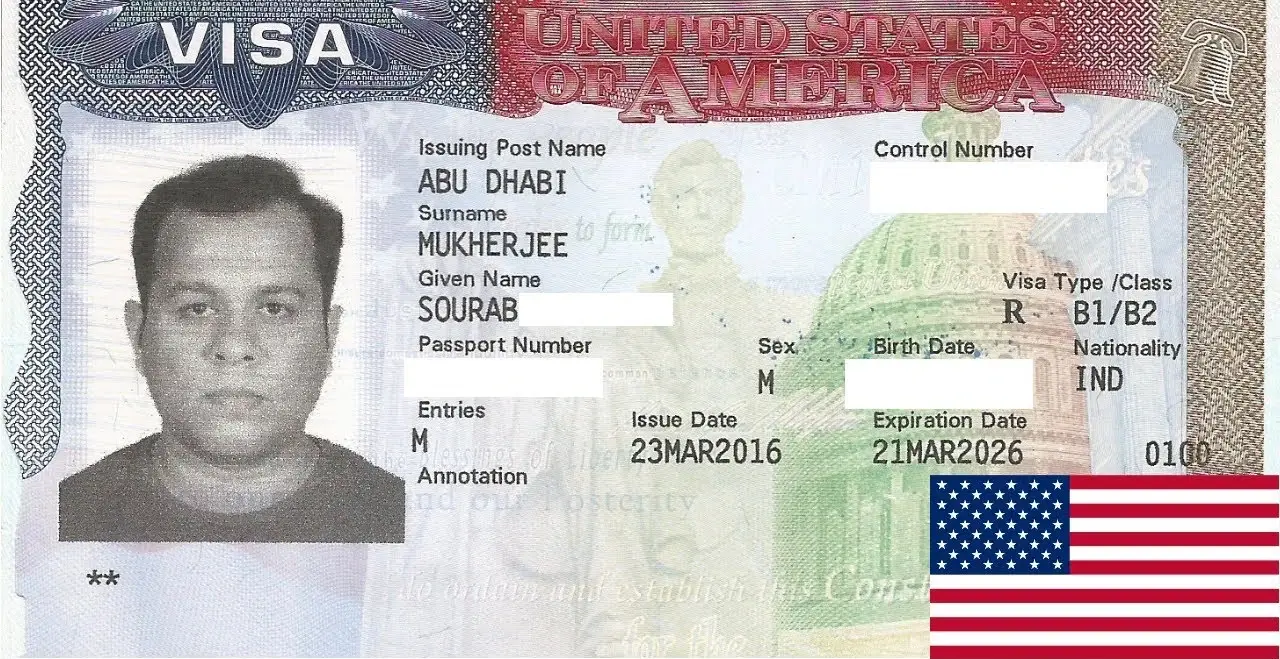Unlocking Opportunities: Necessary Info on US Visas for Indian People
Maneuvering the intricacies of US visa options is necessary for Indian residents aiming to check out chances in the US. With various classifications varying from momentary visitor visas to pathways for long-term residency, recognizing the subtleties of each can markedly impact one's journey. This conversation will certainly highlight crucial info, consisting of application treatments and qualification criteria, that can encourage people in their pursuit of new experiences. As we unbox these necessary elements, the concern occurs: what techniques can one utilize to boost their possibilities of an effective application?
Summary people Visa Types
When going across the facility landscape of US immigration, comprehending the different kinds of visas available is essential for Indian residents seeking access right into the US (Types Of US Visas). The US immigration system is largely categorized right into 2 wide classifications: immigrant visas and non-immigrant visas
Immigrant visas are marked for those intending to live permanently in the US. These include family-sponsored and employment-based visas, where candidates generally call for an enroller. Non-immigrant visas, on the other hand, provide to individuals looking for short-lived residence, such as visitors, business visitors, and those taking a trip for certain purposes like job or research.
Within the non-immigrant group, a number of visa kinds exist, including B-1/ B-2 for business and tourist, H-1B for specialty line of work, L-1 for intra-company transferees, and O-1 for people with remarkable abilities. Each visa has unique eligibility requirements and application processes, demanding comprehensive research study to determine the suitable group.
Understanding these classifications is essential for Indian residents, as it enables them to browse the application procedure better, guaranteeing they select the appropriate visa kind to fulfill their certain requirements and goals. US Visas For Indian Citizens.
Pupil Visa Options
For Indian people desiring research in the US, student visas provide an important path to seek academic opportunities. The key visa classifications for pupils are the F-1 and M-1 visas.
The F-1 visa is designated for scholastic pupils enlisted in a full time program at an accredited establishment, such as colleges and universities. This visa allows pupils to participate in on-campus employment and, under certain problems, get involved in optional useful training (OPT) after completing their level, offering valuable job experience in their field of study.
Alternatively, the M-1 visa is planned for vocational or non-academic programs. It deals with pupils seeking technological or employment training, enabling them to register in non-degree programs. M-1 visa holders may join practical training, but it is normally much more limited compared to the F-1 group.
To get a trainee visa, candidates need to protect admission to an U.S. institution, get a Form I-20, and demonstrate economic capacity to sustain their education and learning and living expenses. Recognizing these visa choices is substantial for Indian people preparing to start their instructional trip in the US.
Visa Categories
Lots of Indian citizens seeking work possibilities in the US may think about various classifications customized to different professional requirements and credentials. The most prominent is the H-1B visa, made for proficient employees in specialty line of work calling for a college degree or its equivalent. It allows US employers to momentarily employ foreign employees, with a cap on the variety of visas issued annually.
One more crucial category is the L-1 visa, which promotes the transfer of staff members within multinational firms. The L-1A visa is for supervisors and executives, while the L-1B visa is for workers with specialized expertise.
The O-1 visa accommodates people with extraordinary capabilities in their field, including scientific research, arts, or service. For agricultural or seasonal work, the H-2A and H-2B visas are readily available, permitting employers to employ foreign workers for temporary placements.
Family-Based Migration
Family-based immigration gives a pathway for US people and lawful long-term citizens to rejoin with their relatives from India. This immigration category is basic for maintaining domestic bonds and facilitating the combination of relative right into USn society. US citizens can petition for immediate loved ones, consisting of spouses, children, and parents, without encountering annual limitations on visas. This expedited process significantly lowers waiting times for these close household connections.
In comparison, legal permanent homeowners might sponsor partners and single children, however they undergo annual caps, causing much longer wait times. The family-sponsored immigration system is split right into two main groups: immediate relatives and family choice classifications. The previous consists of those who have a straight partnership with an U.S. resident, while the latter incorporates farther relatives, such as siblings and wedded youngsters of citizens, and children of legal permanent locals.
For Indian citizens seeking family-based migration, recognizing the subtleties of this system is imperative. Proper documents and adherence to application methods are important for successful sponsorship. By steering via these intricacies, families can function in the direction of rejoining and building their lives together in the US.
Permanent Residency Process
The process of getting irreversible residency in the US involves several key visa groups customized for Indian citizens. Recognizing the application actions, consisting of required documents and eligibility criteria, is essential for an effective outcome. Additionally, possible candidates must understand the expected timeline and certain demands associated with each group.
Visa Categories Overview
While passing through the intricacies of the US migration system, Indian citizens looking for long-term residency should acquaint themselves with numerous visa classifications customized to various conditions. The primary path for irreversible residency is through employment-based visas, which are categorized into a number of preferences, consisting of EB-1 for individuals with phenomenal capacities, EB-2 for professionals holding sophisticated levels, and EB-3 for proficient workers. Each classification has specific qualification requirements and processing times.

Variety visas, although limited in number, offer an opportunity for people from underrepresented countries to look for permanent residency through a lotto game system. In addition, humanitarian options such as asylum and refugee status offer pathways for those dealing with persecution.
Understanding these visa classifications is important for Indian residents, as they substantially influence the method for getting permanent residency in the US. Each group's nuances and needs demand mindful factor to consider to align with individual situations and goals.
Application Process Steps
Guiding the application procedure for long-term residency in the US involves a number of key steps that need to be carefully complied with to assure a successful outcome. The journey commonly starts with establishing the appropriate migration category, such as employment-based or family-sponsored visas. Applicants should gather essential paperwork, including proof of qualification, financial statements, and personal identification.
As soon as the classification is determined, the following step is to file the Kind I-130 (Request for Alien Loved One) or Type I-140 (Immigrant Request for Alien Employee), depending upon the basis of the application. Complying with the authorization of the petition, applicants will certainly require to complete the National Visa Center (NVC) processing by sending the required charges and types.
Next, the candidate must undergo a medical exam and acquire police clearance certifications. As soon as these are completed, a meeting will certainly be set up at the US consulate or consular office. It is essential to prepare completely for this meeting, as it can greatly affect the choice on the application. Upon approval, the applicant will get their visa, approving them permanent residency in the United States.
Timeline and Needs
Charting the timeline and demands for acquiring long-term residency in the US is essential for Indian residents looking for to establish a long-lasting existence. The process mainly rests on employment-based or family-sponsored pathways, each with specific prerequisites and timelines.
For employment-based migration, the process usually begins with a labor accreditation, which can take a number of months. Once approved, the company files a Kind I-140, Immigrant Request for Alien Employee, which can take an added six months to a year, depending on the processing. Complying with I-140 approval, candidates may need to await their priority day to come to be present, which can differ significantly based upon the candidate's group and country of origin.
For family-sponsored immigration, US citizens can request for instant relatives, which generally causes faster processing. Nevertheless, various other family members groups might involve longer wait times because of annual caps.
Application Treatments
Comprehending the application treatments for US visas is crucial for Indian people looking for entry into the US. US Visas For Indian Citizens. This area will certainly supply an overview of different visa categories and lay out the detailed process for using. By following these guidelines, candidates can navigate the intricacies of the visa efficiently
Visa Categories Introduction
Maneuvering the various visa classifications available to Indian citizens can be a complicated procedure, but it is important for those seeking to take a trip, work, or research study in the US. The US visa system is classified mainly into non-immigrant and immigrant visas, each serving unique objectives.
Non-immigrant visas, such as B-1/ B-2 for service and tourist, F-1 for academic study, and H-1B for specialized employment, allow temporary stays. Candidates must demonstrate their intent to return to India after their visit.
On the other hand, immigrant visas, including family-sponsored and employment-based categories, provide a path to long-term residency. These visas usually call for sponsorship from a family member or employer in the US, in addition to a rigorous application process.

Step-by-Step Refine
Normally, the application procedure for US visas entails numerous crucial steps that candidates should meticulously comply with to guarantee a smooth experience. The very first step is to figure out the suitable visa group based on the objective of travel, such as work, research study, or tourism. As soon as the category is recognized, applicants have to complete the online DS-160 type, providing accurate individual information and travel details.
After submitting the DS-160, applicants ought to pay the visa fee, which differs by visa kind. Next, schedule a visit for a visa meeting at the local US Consular office or Consulate. Types Of US Visas. It is vital to prepare for the meeting by celebration required files, including a more info legitimate visa, visa confirmation, cost settlement receipt, and any sustaining documents particular to the visa classification
On the day of the meeting, get here promptly and dress properly. During the interview, be prepared to answer inquiries concerning your travel objectives, economic stability, and connections to India. Lastly, if accepted, the visa will certainly be stamped in the visa, permitting for travel to the US. Adhering to these steps ensures an efficient and effective application procedure for Indian residents.
Tips for an Effective Application

Ensure that all kinds are finished precisely and honestly. Little errors or omissions can result in hold-ups or even denials. It is recommended to collect all required supporting records, consisting of financial declarations, work letters, and evidence of ties to India, which demonstrate your intent to return post-visit.
Prepare for your visa interview by exercising feedbacks to common inquiries associated with your travel plans and background - US Visas For Indian Citizens. Self-confidence and clarity can greatly affect the officer's impact. Lastly, take into consideration looking for help from respectable migration consultants if you feel overwhelmed
Frequently Asked Inquiries
What Are the Handling Times for US applications?
Handling times for US visa can differ significantly based upon the visa type, application volume, and the candidate's location - Types Of US Visas. Typically, applicants ought to prepare for a handling duration ranging from a couple of weeks to several months
Can I Adjustment My Visa Status While in the US?
Yes, individuals can transform their visa standing while in the US, offered they meet qualification demands and follow correct procedures. It is important to file the ideal application with US Citizenship and Immigration Services (USCIS)
Exist Age Purview for US Visa Applicants?
There are normally no details age limits for US visa applicants; however, specific visa classifications may have age-related eligibility standards. It is necessary to assess the demands for each and every visa kind to assure conformity.
What Are Typical Reasons for Rejection?
Usual reasons copyright denial include inadequate financial resources, failing to demonstrate connections to the home nation, insufficient application forms, absence of proper documentation, previous migration offenses, and failure to satisfy qualification requirements for the specific visa category.
How Can I Appeal a Visa Rejection Decision?
To appeal a visa rejection, examine the consular police officer's factors, collect supporting paperwork, and submit a formal attract the ideal authority, making sure to stick to specified timelines and step-by-step requirements for the allure process.